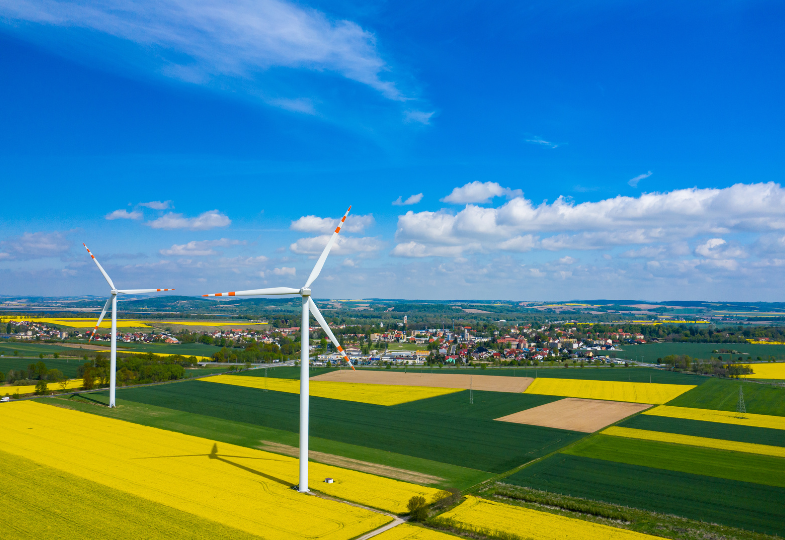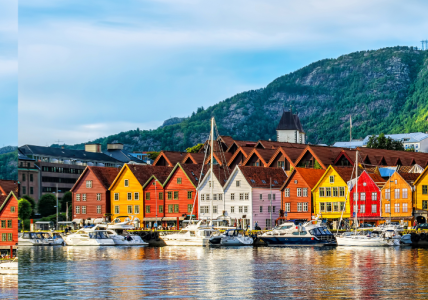With the EU Green Deal, Europe has vowed to become climate-neutral by 2050. To meet this goal, green energy systems must evolve faster. Here are some North Sea Region initiatives pushing the pace of the transition.
Part 2 in a 4-part series
Amid growing concerns over climate change, there is a glimmer of hope: While the energy transition stalled in 2018, the Energy International Agency (EIA) now predicts a 50% rise in renewable energy between 2019 and 2024, mainly due to falling costs of solar and wind energy.
However, this is still not fast enough given the ongoing and projected growth in energy consumption. The green energy transition must speed up in the next few years for the world to meet the Paris agreement and avoid a global temperature rise of more than 1.5 degrees Celsius.
Unfortunately, there are lots of spanners in the works threatening to slow the process. One example is “short-termism” in policy and business – ignoring the long-term effects of present-day decisions.
Cutting the turf
The North Sea Region is uniquely placed to demonstrate business models, policy frameworks, and technologies that could put the world on track towards a rapid transition. The global Energy Transition Index 2019 includes five of the region’s countries in its top 10 list – Sweden, Norway, Denmark, the Netherlands, and the UK. Sweden is in the top spot and Norway is in the third place.

Offshore wind turbines in Öresund, a strait between Sweden and Denmark.
Several ongoing North Sea Region projects are designed to fast-track the energy transition. This article presents the first examples.
1 Raising energy efficiencies
Despite efforts to save energy, Europe’s energy consumption has been growing in recent years. This reduces the chance of reaching the EU energy efficiency targets.
Buildings account for 40% of Europe’s energy consumption and 36% of CO2 emissions in the EU. Raising their energy efficiency could be key to closing the gap, however the cost of retrofitting buildings is too high for large-scale energy renovation.
Indu-Zero is responding to this challenge: The project develops a factory blueprint for affordable retrofitting of 22 million homes. And they expect to present their first physical showcases in 2020 in the Netherlands and Belgium.
This bold and ambitious approach has quickly gained attention. In 2019, the project featured at the Sustainable Built Environment (SBE) meeting in Graz and at a Housing Europe event in Lyon, and is now showcased at the housing evolutions website. As a spin-off, the project was invited to join the EU Thematic Group 1 of Construction 2020 Strategy meeting in Brussels in November 2019. Prompted by the organisers, Indu-Zero is now applying to feature at the next of the World Sustainable Built Environment (WSBE) conference, BEYOND 2020.
Meanwhile, 2IMPREZS – winner of the Interreg Project Slam 2019 – is involving thousands of school kids in slashing 30% of their schools’ energy use. Other projects like SMARTGREEN and DUAL Ports are working to decarbonise industry sectors such as greenhouses and ports.
2 Facilitating civic energy
The European Energy For All package recognises the rising role of citizens and communities in the energy transition. Public resistance is a major obstacle to expanding coastal and land-based green energy; there is a growing recognition that local communities are more likely to embrace new renewable energy facilities when they can actively engage and benefit from the energy production.
With supportive frameworks, citizens and communities could become the next big drivers of green energy in coastal and land areas.

COBEN is supporting a shift of energy value chains from centralised utilities to community-owned renewable energy enterprises. The project is inspiring policies that advance civic energy, including a policy rule on social acceptance adopted in Dutch city of Emmen’s spatial planning regulations; development and piloting of a new methodology for Scottish Local Energy Plans; and a guide for municipalities in East Flanders to create local economic return and social benefits from investments in renewable energy.
Moreover, the COBEN process approach to mainstreaming civic energy was part of European consultations on shaping the EU’s future energy market. DG Energy has also encouraged COBEN to create a handbook and set up a European Civic Energy Forum.
Finally, EMPOWER 2.0 launched recently. This project will run pilots that use opportunities to organise direct access for civil communities to the energy market by engaging civil society structures such as schools, sports clubs, neighbourhoods, business parks and local energy cooperatives.
3 Scaling up the energy transition at sea
The North Sea itself holds a vast potential for upscaling renewable energy, with its virtually unlimited supply of water and wind energy.
According to the International Energy Agency’s Offshore Wind Outlook 2019, the North Sea Region is a global leader in offshore wind energy. There is still plenty of untapped potential, and projects are building capacity and business networks for the offshore wind sector. OESA is deploying floating offshore wind turbines; WASP pilots wind-assisted shipping; and Decom Tools works for safe and eco-friendly decommissioning of offshore wind turbines.

Floating offshore wind turbine. Image by SeaTwirl, partner in the OESA project
Ocean energy is evolving fast, with Europe as the world leader in installed capacity. OESA develops services to create new ocean energy parks in the North Sea, including tidal, current, and wave energy.
4 Building skills and networks
A fast transition to clean energy requires new skills and competencies to be available in industry supply chains. RIGHT and Inn2POWER both contribute to closing skills gaps in the green energy sector. For example, Inn2POWER has launched a popular offshore wind MBA course for smaller companies.
SCALE-UP and Northern Connections are creating networks that help specialised supply chain SMEs join up with business partners across the region. This enhances knowledge exchange and, in turn, real progress on the ground. Both projects are producing significant, tangible results such as, in the case of SCALE-UP, new clean technology investments of €29 million.
5 Improving governance
A great insecurity about future infrastructure and policy frameworks forms the backdrop for green energy initiatives in the region. Some of the biggest unresolved issues include the power grid and trade systems, which are becoming outdated.
Due to uneven, weather-dependent production, a green energy landscape requires more flexible systems for distribution and trade. Decentralised power systems also need to better integration. These aspects are ‘supertankers’ in the sense that they require high-level decisions and often large investments.

As for energy produced at sea, cooperation among the countries sharing the ocean is essential. The NorthSEE project brings together ministries in the region to discuss maritime spatial planning in the North Sea – including offshore wind energy, ocean energy, marine cables, and related policies. The project has produced a preliminary set of recommendations, signifying growing consensus on the way forward.
Some North Sea Region projects work with smart urban grids: SEEV4-City works to link grids with the power used and generated by electric vehicles. And ACCESS brings together experts in technology, governance and financing to help cities develop smart grids in cost-efficient ways.
More ways to cut emissions
The next articles in this series will cover more ways in which projects help reduce the region’s carbon footprint. Stay tuned for these upcoming articles!
- Article 3: Decarbonising the transport sector, where electrification, hydrogen, shared mobility and automation are parts of the recipe.
- Article 4: Carbon sequestration, where sustainable land management plays a leading role.
Read the first article in this series: Enabling climate mitigation in the North Sea Region
Top image: Colourbox




